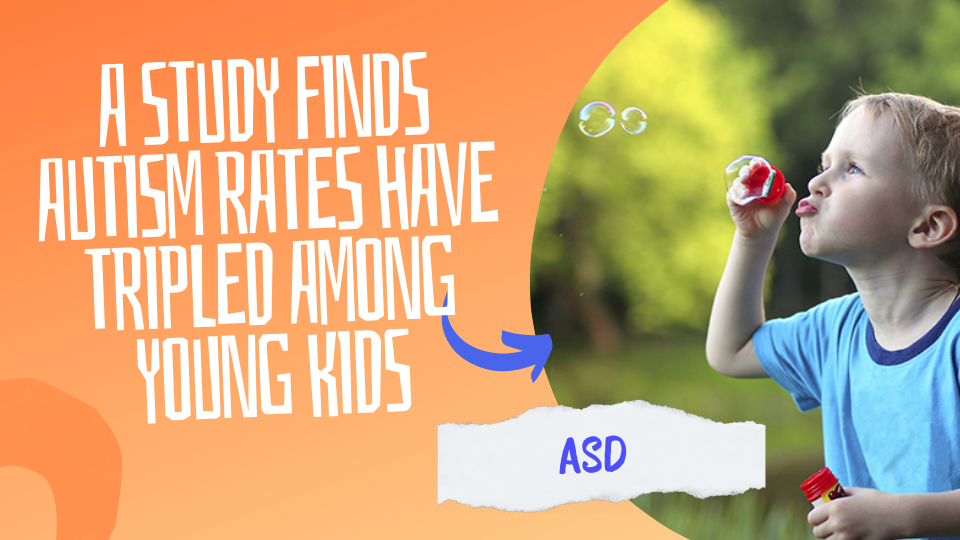


Hello there!
Glad to have you here! Our blog is dedicated to shedding light on Autism, or Autism Spectrum Disorder (ASD), and the possible reasons for the increasing autistic rates during the last couple of years.
Autism is a developmental disorder that affects the communication, social interaction, and behavior of a child. It’s important to note that Autism is a spectrum disorder, and so affects different individuals differently and to varying degrees. Whether you’re a parent, caregiver, educator, or simply interested in learning more about Autism, we’re here to share our knowledge and expertise in the field of Autism, diagnosis, and best treatment for autism as well as autistic treatment in Nashik.
So let’s dive in and explore the world of Autism together!
Some common characteristics of autism include difficulty with social interactions, delayed or limited speech and language development, repetitive behaviors, and narrow or intense interests. These characteristics typically appear during early childhood, and the severity and range of symptoms can vary widely among individuals with autism. If you observe any symptoms in your child do consult an autism treatment doctor or you can take an appointment at one of the Best autism treatment center in Nashik or any other autism treatment hospital for both evaluation and ASD therapy in children.
There is ongoing debate and research on why autism rates have increased over the past few decades. It’s important to note that the increase in autism diagnoses may not necessarily indicate a true increase in the prevalence of autism, but rather an increase in awareness, improved diagnostic criteria, and better identification and screening of individuals with autism.
Broadening diagnostic criteria: The diagnostic criteria for autism have evolved over time. As a result, more individuals who would have previously been diagnosed with other developmental or intellectual disabilities may now be classified as having autism.
Increased awareness and screening: There has been an increased awareness of autism among healthcare professionals, educators, and the general public, leading to more screening and earlier identification of individuals with autism.
Developmental screening: The first step in diagnosing ASD is usually a developmental screening. This screening typically occurs during a child’s regular check-up with their
pediatrician, and it involves a series of questions and observations that help to identify any developmental delays or concerns. If a child shows signs of developmental delay, especially speech delay, they may be referred to a Pediatric Neurologist for further evaluation.
Check if they have Social communication challenges: Healthcare professionals will observe a child’s interactions with others. Children with ASD may struggle to initiate and maintain conversations, have difficulty understanding sarcasm or humor, and may avoid eye contact or physical touch.
Look for repetitive behaviors or restricted interests: Healthcare professionals will observe a child’s behavior and look for repetitive actions such as hand flapping, rocking, or spinning objects. They may also ask about the child’s interests and hobbies to see if they have a narrow range of interests and engage in repetitive routines.
Comprehensive evaluation: This evaluation aims to provide a detailed understanding of the child’s unique strengths and challenges and may include a range of assessments and tests, such as observation of the child’s behavior and communication, cognitive and language assessments, and interviews with the child’s parents or caregivers.
Use standardized assessments and questionnaires: The most commonly used assessments include the Autism Diagnostic Observation Schedule (ADOS), which involves direct observation of the child’s behavior and communication, and the Childhood Autism Rating Scale (CARS), which involves a clinician rating a child’s behavior based on observed characteristics of autism.
Review the child’s developmental history and family history: In addition to these criteria and assessments, healthcare professionals will also take into account the child’s developmental history and family history.
Once a child is diagnosed with ASD, healthcare professionals will work with the child and their family to develop a treatment plan. This plan may involve ASD therapy for children like behavioral therapy, speech therapy, occupational therapy, and applied behavior analysis (ABA) therapy. These interventions at one of the best treatment centers for Autism may help the child develop social communication skills and manage challenging behaviors.
Managing autism involves finding ways to cope with the challenges that may arise as a result of the condition, while also maximizing your strengths and abilities. Here are some strategies that may help:
Seek support from professionals: It can be helpful to seek guidance from healthcare professionals who specialize in autism, such as psychologists or psychiatrists. They can provide you with specific strategies for managing symptoms, as well as therapies that can help you develop skills for better communication, social interaction, and coping.
Build a support network: In addition to seeking an Autism treatment doctor or a Pediatric Neurologist, it’s important to build a network of family members, friends, and peers who can provide emotional support and practical help when needed.
Learn stress-reducing techniques: Individuals with autism may experience anxiety, stress, and sensory overload. Learning stress-reducing techniques, such as mindfulness, deep breathing, and progressive muscle relaxation can help manage these symptoms.
Develop routines: Developing and sticking to a routine can help individuals with autism feel more secure and reduce stress and anxiety. Routines also help with time management, organization, and task completion, leading to increased confidence and a sense of accomplishment.
Explore sensory integration techniques: Sensory integration techniques, such as sensory diets or sensory rooms, can help individuals with autism manage sensory processing issues.
Explore alternative therapies: Some individuals with autism find that alternative therapies, such as yoga, acupuncture, or massage, can be helpful in managing symptoms.
Remember that everyone’s experience with autism is unique, so it’s important to find strategies that work best for you. Working with a healthcare professional at autism treatment in Nashik can help you develop a personalized plan for managing your autism.